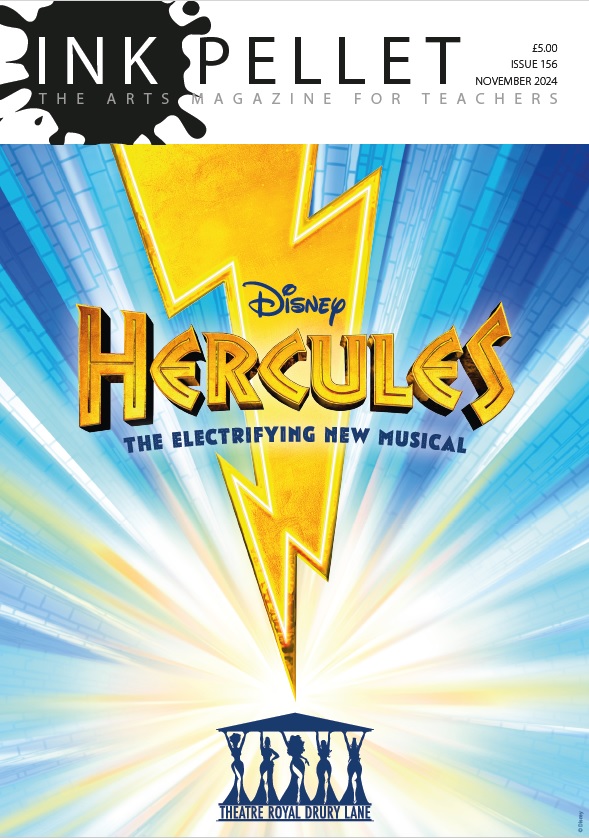I stumbled across the work of Trestle when I taught literacy through drama at a women’s prison. They were my saviour. Once the women put on their masks, they became so animated and wonderful. This inspired me to use them in school. Students behave differently when they wear a mask; they are focussed on the physicality of performance; they become alive in them, in awe of them almost; they find the human quality behind the mask and bring it to life.
Shy students grow in confidence while the older ones are more creative and more explorative. It’s as if they have the subconscious notion that because they’re wearing a mask they can’t be seen.
Working with full masks removes voice while the half masks allow students to become more playful; taking them back to the childlike notion of learning through play exploring character emotions and ideas. Trestle workshops for students last about two hours and are tailored to what you need – there are lots of conversations before the day to make sure they are clear what you want to get out of the workshop.
They also run inset classes – all of the training puts the teacher at the heart and how you can transfer what you’re learning in the classroom, either for a bit of fun before break on Wednesday or to use as an analytical vehicle for in-depth analysis. We’ll have about 20 in a workshop and each student has a go – Trestle has managed to ensure that the audience takes on the role of the provoker; they’re never sitting down for long.
After a brief introduction to the company’s work, it’s practical all the way. Students are up on their feet, breaking down those barriers with lively vocal and physical warm-ups. The good thing about working with professionals is that they are able to feed into the students’ skill base, making them feel comfortable with themselves, thanks to a vast bank of ideas. They will cover phrases, how to stand, introduce stock characters that the students can then explore by drawing on their own experiences. This gives them ownership of what they’re doing. They’re not being told how to do it or copy but filling in things themselves.
When the masks come out there is always a massive reaction. Depending on the group, the facilitator will ask questions about building a general character or looking at a character from a play we might be studying and we connect this to the text.
The masks are all different – there are three levels of full masks and the expressions get more detailed as they go on. The half masks have expression but don’t dictate specifically what they have to do. They are genderless and provoke a response.
There’s lots of laughter and an incredible amount of learning – the kind of stuff you don’t realise you’re learning. We do Edexcel drama where 40 per cent is performance-based; examiners like to see versatility and seeing the student being creative in their movement and interpret certain forms. By putting a mask on, students speak and move in a different way and this allows them to access the higher mark. Trestle masks automatically mean they move differently.
In Key Stage 3 where drama is on part of the National Curriculum you have students who are not willing to participate on a level you’d like them to. Even at GCSE and A level the mask allows them to take more risk and leads them into different areas of exploration. I wouldn’t say they’re all extroverts – some English students will come to drama with their academic English view and we bring in the freedom to explore the physical side. It helps them have a deeper understanding of the text.
For me as a teacher I’m trying to facilitate those lightbulb moments so it’s great to observe them working with someone else. They were coming to me and saying, ‘We can use this!’ I remember one girl in particular, a Y9 student who didn’t want to join in. She was shy and giggly, and wouldn’t stay in role. But when she put on the mask she was two NC levels above where she’d been through commitment to role and how they fed off the interaction.
When I asked her about it she said it was because ‘nobody could see me’. For Key Stage 4 GCSE the boys particularly worry about how cool they look – confidence is not an issue but they’ll only go with roles they think are manageable and cool but when they put the mask on they become more experimental and they don’t mind playing the old lady.
It’s amazing to watch a group of students transform in performance; to think they’re in the playground worrying about what people are doing and two minutes before they were pretending to be an old crone rolling around on the floor with a mask on!
Zoe Neagle teaches drama at Queens’ School, Bushey
For details on the work of Trestle and the company’s performance programme, visit their website at www.trestle.org.uk. The company has recently added half masks to their set


